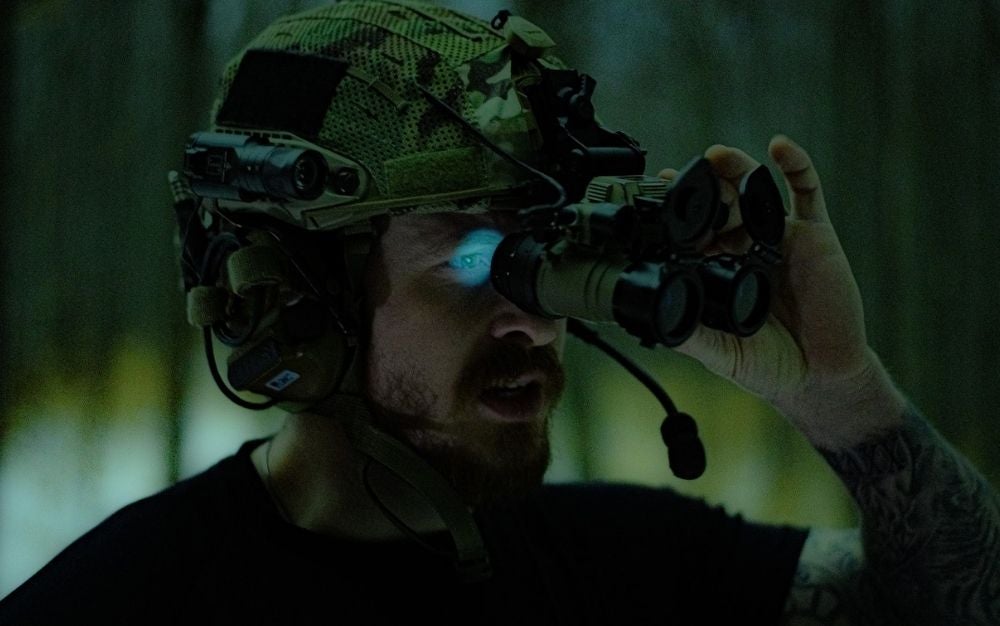Night vision has gone a long way in the decades since its creation, and modern equipment may be divided into three generations based on the type of image intensifier tube utilised. In technical terms, an image intensifier tube is a vacuum-sealed tube that contains a photocell, a micro channel plate, and a photophor screen that allows the device to see in the dark. In layman’s words, the image intensifier tube is what allows for night vision.
Both of Gen 2 and Gen 3 offers a significant improvement over the previous generation of night vision equipment, with Gen 2 devices performing significantly closer to Gen 3 than Gen 1.
How do night vision goggles work?
Humans must rely on technology and electricity to see into the night, unlike nocturnal creatures that have bigger than usual pupils and what’s known as tapetum, which reflects light like a mirror. We do this by converting light to electricity, boosting it, and then converting the enhanced electricity back to light.
Night vision feature considerations
Autogated and gain adjustment
- Auto-Gating improves the night vision image exhibited in dynamic illumination settings, such as muzzle flashes, incoming vehicles, or the use of abrupt white light. It also aids with the transition from low-light to night conditions.
- The user can adjust the brightness of the image presented using Manual Gain Adjustment. This is especially useful when dealing with shifting settings, such as a night with 0% illumination from the moon and stars vs. a night with 100% illumination.
Additional NVG feature considerations
(IR) Illuminators, Power, Battery Life, and Magnification
- In severe low light situations, R Illuminators on night vision gadgets can aid. When there isn’t enough light to create a correct image, Infra-Red (IR) Illuminators generate light that is practically invisible to the naked eye, functioning as a spotlight for your NVGs.
- The source of power and the longevity of that source are other essential factors to consider. The majority of night vision devices utilise normal AA batteries, however there are also specialist battery packs and other power sources available.
- Another element that is dependent on your need is magnification. Because you wouldn’t want to be wandering around with 10X magnification, the majority of night vision goggles will be 1X. However, some are utilised from a stationary posture, in which case the magnification is really useful.
Night vision mounting options
Night Vision Helmets, Skull Mounts, Face Mounts, Handhelds, and Tripods are all available
- The most frequent method of using night vision DTNVS is to have it placed on your head. This makes it possible to use the device without using your hands.
- The majority of helmets include a shroud that receives your preferred NVG mount and then attaches to the night vision goggles itself.
- Other head-mounted solutions include “skull” or “face” mounts, which are comparable to helmet-style retention systems but just include the shroud rather than the entire helmet shell.
- We usually recommend a bump helmet over these choices since it provides significantly more comfort and safety for only a few additional ounces.


